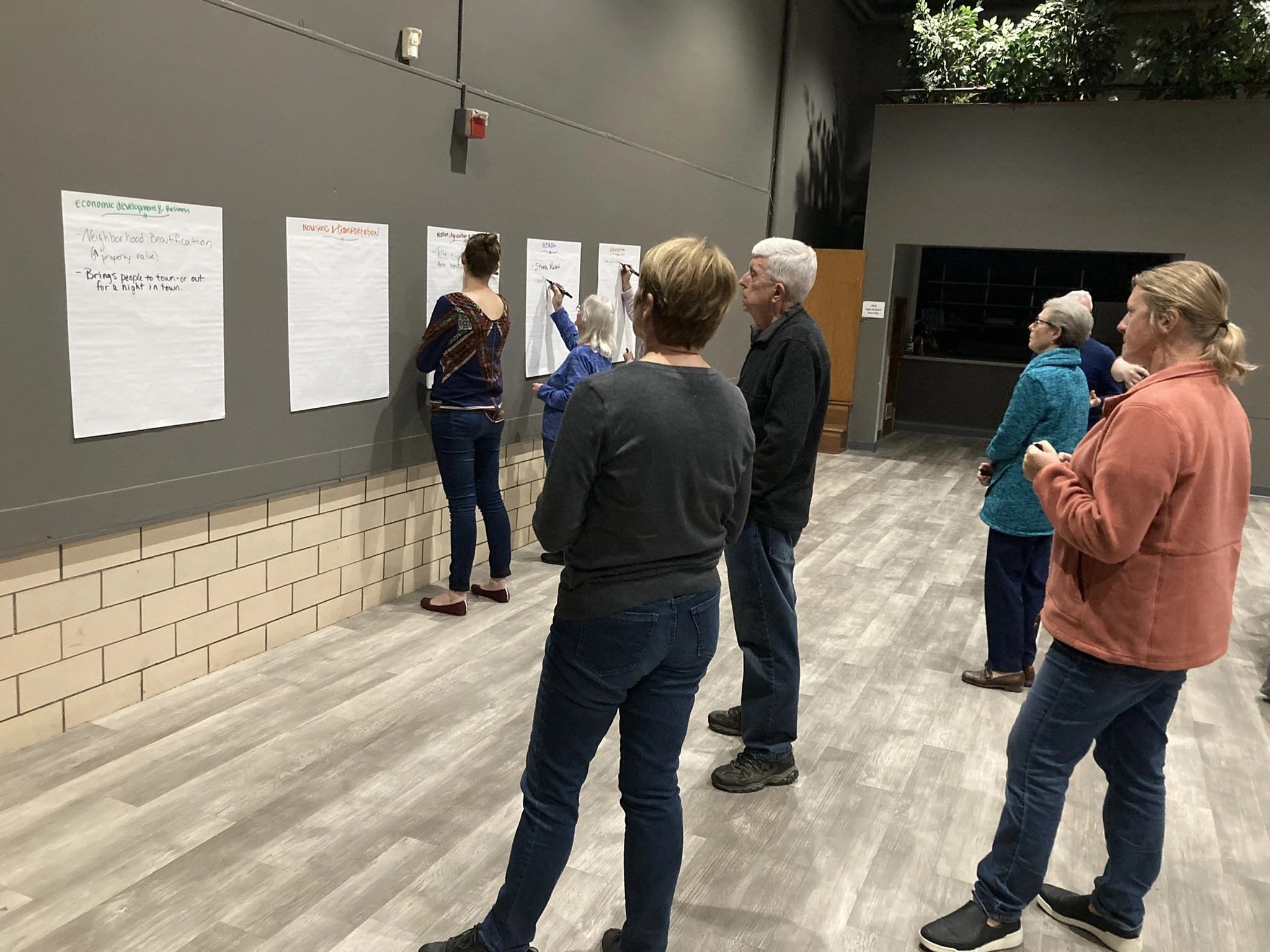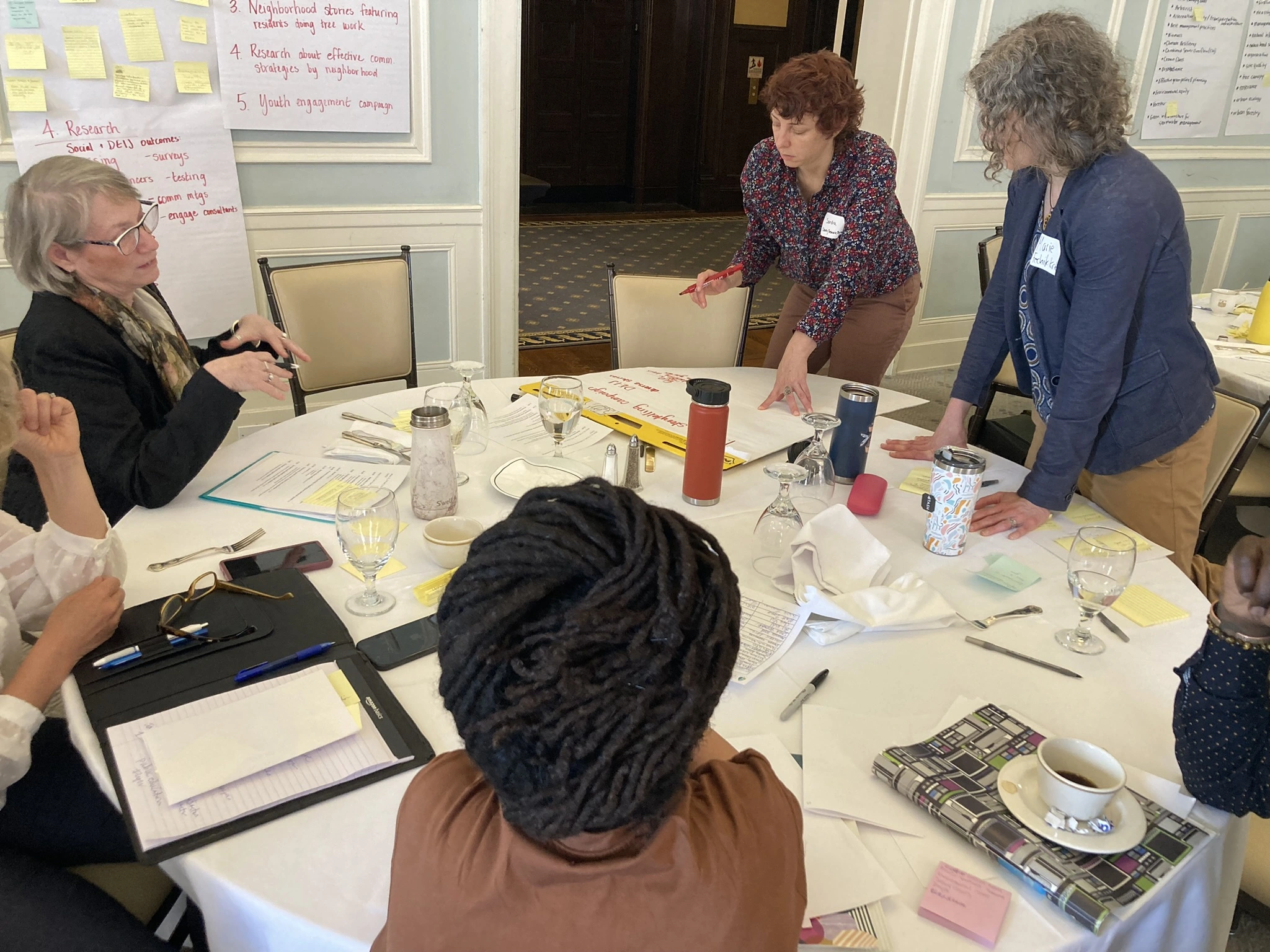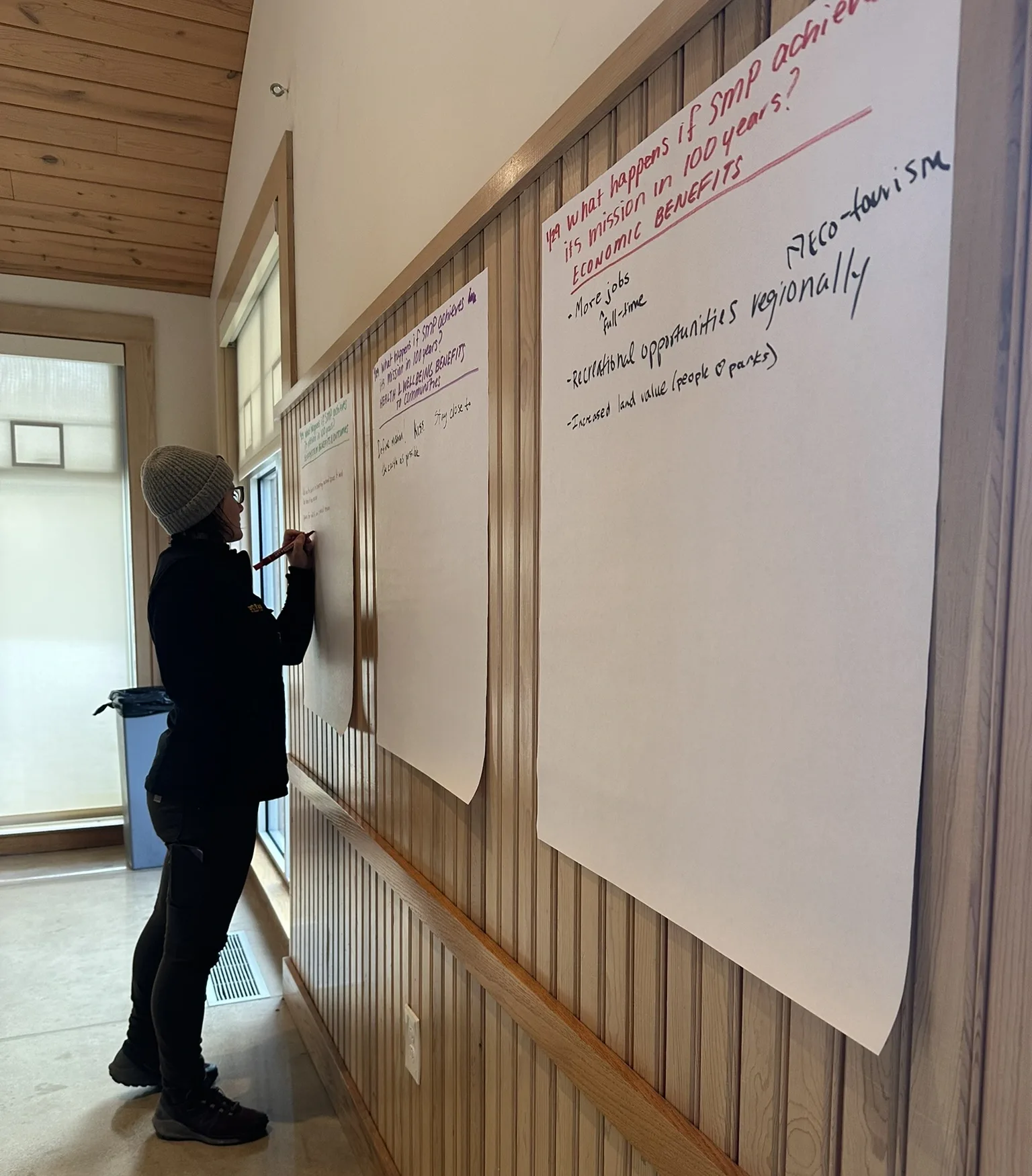
By Elizabeth Schuster, Environmental Economist
INTRODUCTION
Nonprofits often ask me, “What does it mean to apply a systems lens to strategic planning?”
The six elements that I’ve listed below represent a synopsis of what it means to apply a systems lens to nonprofit strategic planning.
However, before starting, keep these two considerations in mind.
One, you always have the option as a nonprofit leader to customize the process to meet your needs. The list below are elements, not rules. You can design the strategic planning process to meet your unique needs – and your budget.
Two, many nonprofits get overwhelmed by the strategic planning process. If this is you, you are in good company. It can feel daunting at the beginning. The way I get past the overwhelm is to break the elements below into a stepwise process. Typically, you’ll spread out the work so there is only one major task your team is working on each month.
Not only does this make it manageable – but you’ll find that each task is associated with clear decision points. That’s why I’ve joked before that after doing all the groundwork, your goals nearly write themselves. The decisions made in each task help your team focus and narrow, so over time the goals emerge with clarity.
6 ELEMENTS FOR APPLYING A SYSTEMS LENS TO STRATEGIC PLANNING
Element 1: Start with an environmental scan across all categories that could be impacting communities.
You want to go into this with curiosity, exploring, “What are the top challenges facing the communities with which we work?” This keeps the emphasis on external factors that could impact your organization’s ability to achieve your mission. Don’t ask at this early stage, “What are the top challenges facing our organization?” because that is too inward focused and doesn’t allow the organization to truly understand the barriers and opportunities for the communities they serve.
I like to ask organizations: If you succeed in achieving your mission, what benefits would you provide to communities in each of these categories:
- Housing
- Health
- Education
- Economic development
- Transportation
- Agriculture
- Environment
- Justice and democracy
Granted, you can frame those categories in any way that is helpful for your organization. The key is to leverage the categories to see the – sometimes unexpected – linkages across the system in which your organization works. This also helps your team identify the root causes of issues – not just band-aid solutions.
Element 2: Invite all the people to participate.
In other words, have an inclusive stakeholder engagement process. If you are a conservation organization, don’t just invite other conservation partners. Invite a diversity of partners and community members to participate. This is another tool for uncovering unexpected connections – as well as bold and innovative new solutions, by offering a new perspective.
Element 3: All voices count.
Even if you aren’t an expert – your lived experience matters.
My team uses the tools from social science to provide an unbiased approach to collecting feedback from everyone. Social science combined with good facilitation helps ensure we are not only listening to the loudest voices. We apply qualitative analysis to aggregate the findings across all of the groups. We capture the themes. We help your nonprofit identify the patterns.
Element 4: Use data, both quantitative and qualitative.
We can quantify the frequency of themes from the stakeholder engagement. That’s the qualitative data.
Then, we look to the published literature to ensure there is data to back up any claims or assumptions. Some groups will do more complex systems mapping, but this is infeasible for most smaller nonprofits. Often, it easier and more useful to create simple result chains to map out how various actions lead to outcomes. This ensures your team is identifying the causal links.
Element 5: Bring context to the data.
I often say – data doesn’t make the decision for you. It’s up to your nonprofit team to bring context to the data and interpret what it means for your organization. Which trends in the data are useful? What’s missing? What could be misleading? There will always be some level of management discretion that is applied to the data.
Element 6: Create your organizational pillars and set your initial draft goals.
I’ve found organizational pillars (or “strategic pillars”) to be incredibly helpful to frame the work of nonprofits. When designed well, pillars can capture your organization’s why / reason for existing. Pillars should capture desired system-level outcomes your organization hopes to achieve. I typically recommend that nonprofits keep the number of pillars to between 4-6 max. Otherwise, your team ends up taking on too much work and getting spread too thin.
Then, goals are developed. Goals are the shorter-term versions of the pillars – that is, the piece of the pillar can your organization achieve in the next 3 years. Keep in mind that the first round of goals are still in draft form. It’s an iterative process to narrow, refine and ensure the goals are even more focused.
WHAT’S MISSING?
What about financial feasibility? Why is that not one of the 6 elements? Yes, financial feasibility matters, but if you lead with that as the first step, it stifles innovation. It’s more effective when you fully understand the system in which your organization is working and the opportunities. Then, you can start to explore the financial feasibility of your goals and strategies.
What about strategic positioning? How will our nonprofit determine if we are filling a competitive niche in the partner landscape? Yes, strategic positioning is also important. In fact, it’s already built into many of the 6 elements listed in the previous section. The environmental scan is also looking for gaps in the landscape. Your stakeholder engagement is also helping to uncover gaps and unmet need.
But “strategic positioning” isn’t one of the 6 key elements because it’s too internally focused. A systems lens means you are looking outward at the impact your organization has on communities. Focusing too quickly on positioning and niche means you risk not fully understanding the linkages, barriers and opportunities in the system in which you work. Your organization can continue to refine your niche and positioning as you narrow your goals and develop strategies.
CONCLUSION
The key take-home is that strategic planning works better when all 6 elements are addressed before the team moves into strategies, tactics and projects. Applying a systems lens first can help your organization identify opportunities, linkages, and surface conflict proactively. This is a critical piece of due diligence that makes it more likely that your nonprofit will succeed in your goals.
Incorporating all 6 elements is most critical if your organization is developing your first-ever strategic plan, if it’s been more than 5 years since your last strategic planning, and/or if there have been significant organization changes in the past 5 years. If your organization has already done a comprehensive strategic planning process recently, your team may be able to skip or shorten some of the steps in the process.





